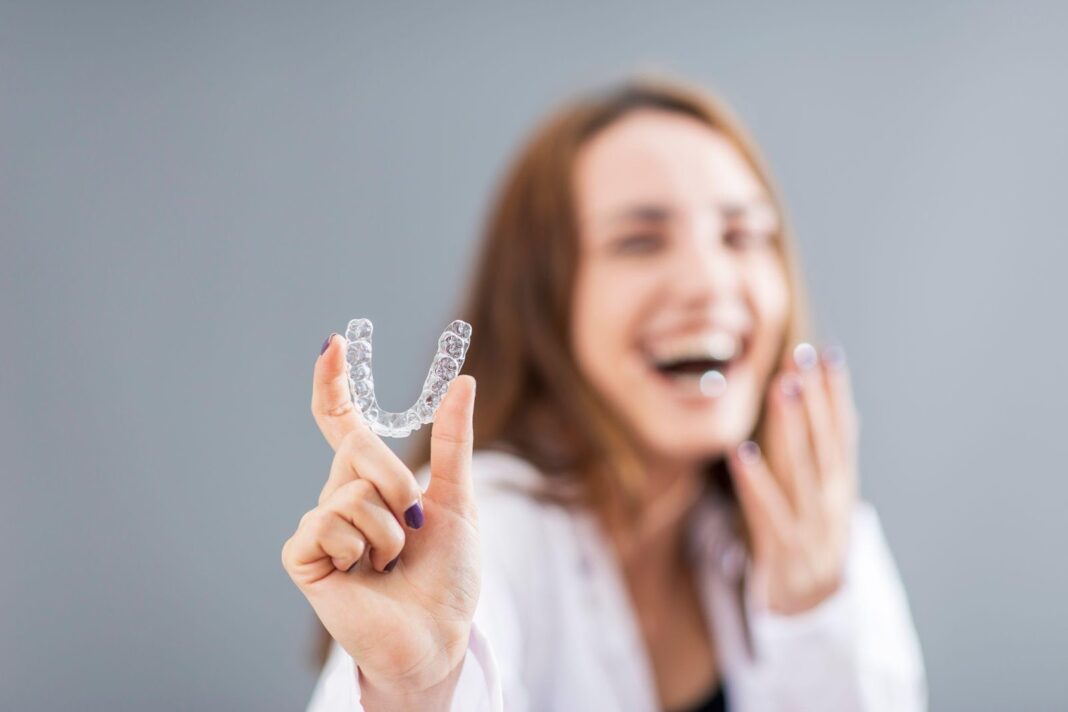Boasting barely visible, removable clear aligner trays and a lot more flexibility than traditional metal braces, it’s easy to see why so many people are turning to Invisalign to straighten their smile.
But how does Invisalign work?
And is it effective at treating all kinds of dental issues?
Read on to learn how the Invisalign system works and the types of dental issues it can fix.
Table of Contents
How does Invisalign work?
Invisalign uses a series of customised clear aligner trays to place gentle and consistent pressure on the teeth and slowly move them into their correct position. Unlike traditional braces, Invisalign technology allows each tooth to be moved individually rather than putting the same pressure across all teeth. This allows for more precision control over the movement of the teeth.
Wearers will typically replace their aligner trays with a new set every week or so as their treatment progresses. They’ll also see their dentist for regular in-person check-ups along the way — usually every 6 to 8 weeks or as requested by the treating physician.
Many wearers enjoy the flexibility of Invisalign, which can be removed for eating, drinking, brushing and flossing. However, it’s important to remember that Invisalign aligners must be worn for at least 20-22 hours per day to be effective.
Treatable cases with Invisalign
Invisalign is proven to be effective for treating most dental concerns, including crooked teeth, overcrowding, tooth spacing and bite corrections. It is also a suitable treatment option for both adults and teens.
Take a look through the Invisalign before and after photos below to see how effective this clear aligner system can be for different smiles.
Minor corrections and teeth straightening
Patients with only slightly crooked teeth or who only need minor corrections can enjoy a straighter smile in just a few months with Invisalign Express treatment. This type of Invisalign treatment is much faster than the full Invisalign treatment and usually only takes around 3 to 6 months.

Overcrowding
Overcrowding is a common dental problem that occurs when your mouth does not have enough space to accommodate all of your adult teeth. Instead of growing in straight, the teeth will twist and overlap one another. Crowded teeth can become very difficult to clean and food particles can easily get stuck between the overlapping teeth. This can lead to a build-up of plaque and bacteria that cause cavities and gum disease.
Invisalign works on overcrowding by realigning the crooked and overlapped teeth into their ideal position.

Teeth spacing
Teeth spacing or gapped teeth occur when there is excessive space between neighbouring teeth. This is a common dental issue and can be caused by a range of reasons including genetics, tooth movement or tooth loss. Spacing between teeth leaves a lot of room for food particles to get stuck. This is not only annoying but it can put you at a higher risk of cavities and tooth decay. Teeth spacing can be fixed with Invisalign as each new set of aligners helps to bring the teeth closer together and close the gaps.

Overbite
An overbite is where the upper teeth protrude out beyond the lower teeth. This type of malocclusion is sometimes called ‘buck teeth’. It’s normal to have a slight overbite — your top teeth should naturally rest slightly over your bottom teeth. But a severe overbite can lead to a number of dental problems, such as worn down teeth, issues with chewing and speaking, and jaw issues.
Although they are more complex to treat, Invisalign works on overbites and other bite correction cases. Usually, Invisalign attachments will be used in conjunction with the clear aligners for added guidance and pressure on the teeth.

Underbite
An underbite is where the lower teeth protrude out beyond the upper teeth and overlap them. Bite issues are considered to be more complex dental problems and, if left untreated, can cause serious issues like worn down teeth, tooth decay, gum disease, issues with eating and speaking, and jaw issues. Thankfully, Invisalign can help to correct underbites and realign the jaw into the proper position.

Crossbite
A crossbite occurs when some of the top teeth sit inside the bottom teeth when the mouth is closed. It can happen at both the front and the back of the mouth. Like all bite issues, a crossbite can leave you at risk of major dental problems if left untreated. Fortunately, Invisalign can treat crossbites but the treatment time is typically longer for these more complex bite correction cases.

Open bite
An open bite is a rare type of malocclusion when the upper teeth and bottom teeth do not meet or overlap when the mouth is closed. Open bites can be caused by a variety of factors, including genetics, TMJ disorders, tongue thrusting or prolonged thumb sucking. While this type of bite correction is very complex to treat, it is possible to fix an open bite with Invisalign.

H2: How do I know if I’m a good candidate for Invisalign?
The best way to find out whether Invisalign will be effective for treating your smile is to speak to a dentist that specialises in Invisalign treatment. During an Invisalign consultation, they will assess your teeth and overall oral health and determine whether Invisalign is suitable for you.
Author:
Dr. Alice Hoang
BDSc (CSU)

Bio:
Dr Alice Hoang is a dentist from Delight Dental Spa in Mascot, NSW. Specializing in Invisalign treatment and cosmetic dentistry, Dr. Alice is passionate about helping her patients achieve their dream smiles.
